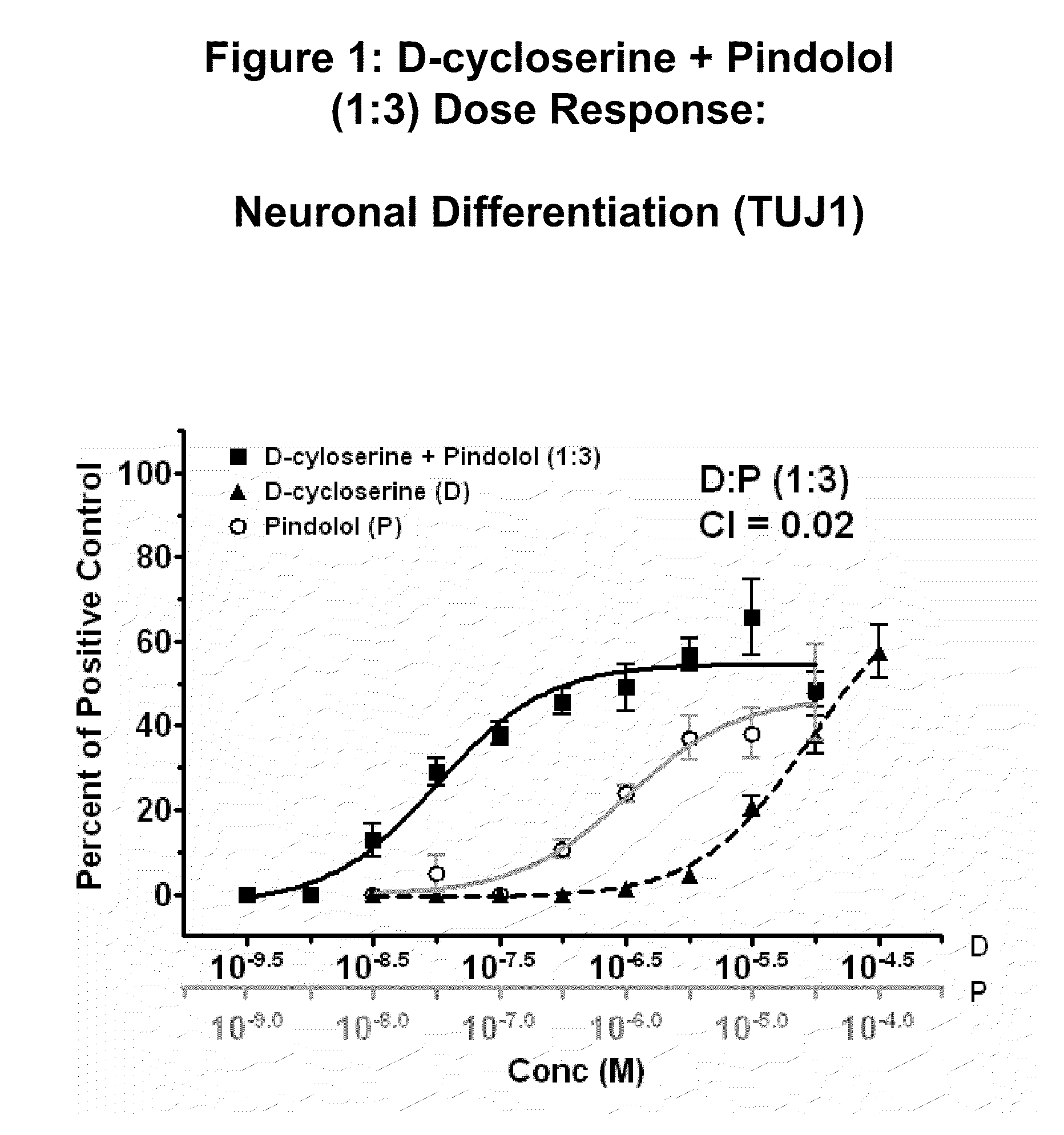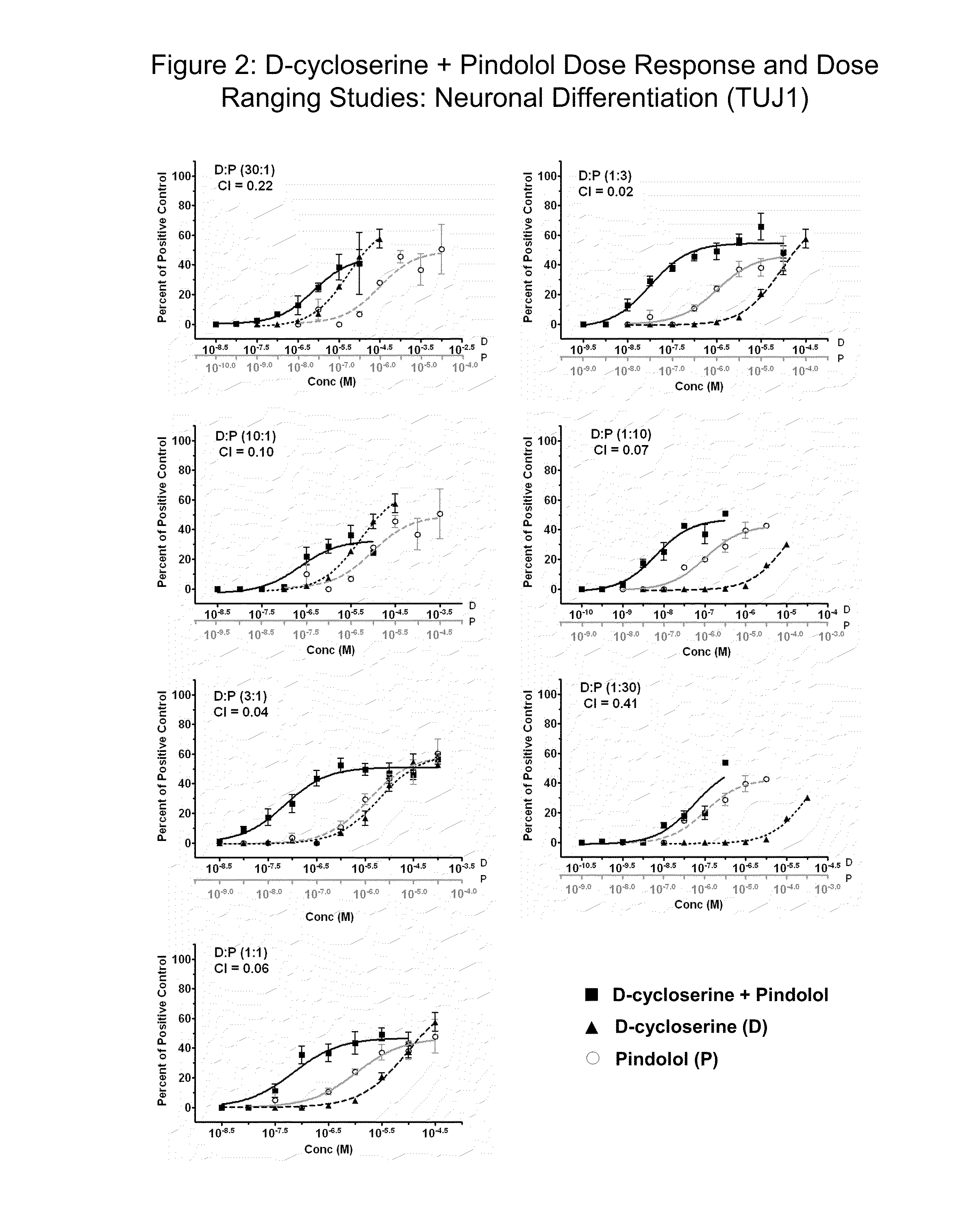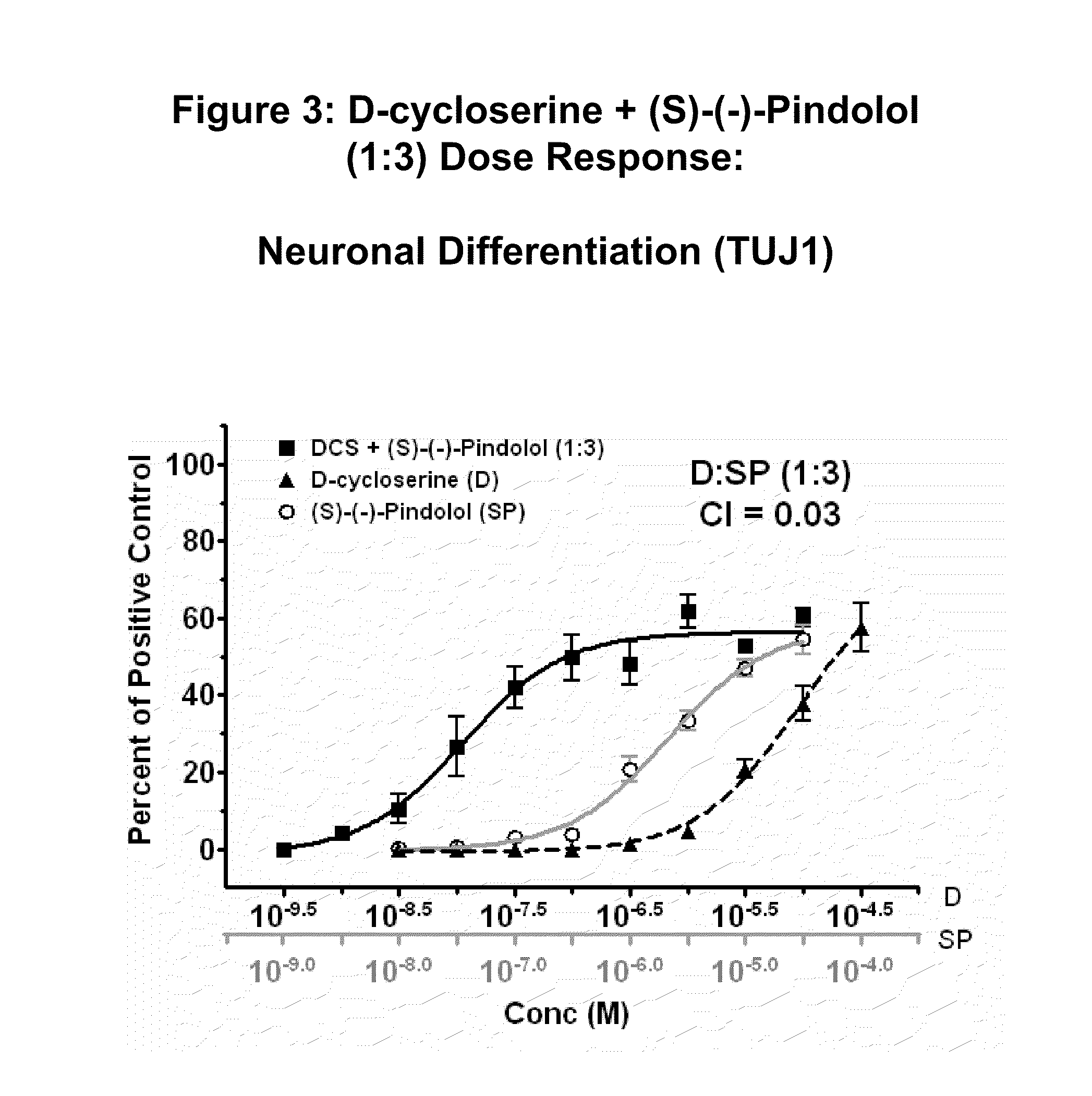Modulation of neurogenesis using d-cycloserine combinations
a neurogenesis and cycloserine technology, applied in the field of neurogenesis modulation using dcycloserine combinations, can solve the problems of not being commonly used in the treatment of infections other than tuberculosis, and achieve the effect of decreasing the level of astrogenesis
- Summary
- Abstract
- Description
- Claims
- Application Information
AI Technical Summary
Benefits of technology
Problems solved by technology
Method used
Image
Examples
example 1
Effect of Combining D-Cycloserine and Pindolol on Neuronal Differentiation of Human Neural Stem Cells
[0356]Human neural stem cells (hNSCs) were isolated and grown in monolayer culture, plated, treated with varying concentrations of D-cycloserine and pindolol (test compounds), and stained with TUJ-1 antibody, as described in U.S. Provisional Application No. 60 / 697,905; now US Published Patent Application Number 2007 / 0015138. Mitogen-free test media with a positive control for neuronal differentiation was used along with basal media without growth factors as a negative control.
[0357]Results are shown in FIG. 1, which shows concentration response curves for neuronal differentiation after background media values were subtracted. The concentration response curve of the combination of D-cycloserine and pindolol (1:3 ratio) is shown with the concentration response curves of D-cycloserine or pindolol alone. The data is presented as a percent of neuronal positive control. The data indicate t...
example 2
Effect of Combining D-Cycloserine and (S)-(−)-Pindolol on Neuronal Differentiation of Human Neural Stem Cells
[0358]Human neural stem cells (hNSCs) were isolated and grown in monolayer culture, plated, treated with varying concentrations of D-cycloserine and (S)-(−)-pindolol (test compounds), and stained with TUJ-1 antibody, as described in U.S. Provisional Application No. 60 / 697,905 (incorporated by reference). Mitogen-free test media with a positive control for neuronal differentiation was used along with basal media without growth factors as a negative control.
[0359]Results are shown in FIG. 3, which shows concentration response curves of neuronal differentiation after background media values were subtracted. The concentration response curve of the combination of D-cycloserine and (S)-(−)-pindolol (1:3 ratio) is shown with the concentration response curves of D-cycloserine or (S)-(−)-pindolol alone. The data is presented as a percent of neuronal positive control. The data indicate...
example 3
Dose Ranging and Dose Ratios for the Combinations of D-Cycloserine / Pindolol and D-cycloserine / (S)-(−)-Pindolol
[0360]To determine the most efficacious dose and dose ratio of D-cycloserine in combination with pindolol or (S)-(−)-pindolol for future preclinical and clinical studies, dose ranging studies were conducted examining synergy for neurogenesis. For the ratios of 30:1 and 10:1 (D-cycloserine:pindolol or (S)-(−)-pindolol ratio), the D-cycloserine concentration ranged from 0.0304 to 31.6 μM for each dose response assay. For the ratios of 3:1, 1:1, 1:3, 1:10 and 1:30 (D-cycloserine:pindolol or (S)-(−)-pindolol ratio), the D-cycloserine concentration ranged from a lower limit of 0.003 μM to an upper limit of 100 μM for the 3:1 ratio, to an upper limit of 31.6 μM of the 1:1 and 1:3 ratios, and to an upper limit of 10 μM for the 1:10 and 1:30 ratios. The pindolol or (S)-(−)-pindolol concentrations were varied based on the respective ratios tested. Individual dose response curves were...
PUM
| Property | Measurement | Unit |
|---|---|---|
| chemical addictions | aaaaa | aaaaa |
| affective disorder | aaaaa | aaaaa |
| depressive disorder | aaaaa | aaaaa |
Abstract
Description
Claims
Application Information
 Login to View More
Login to View More - R&D
- Intellectual Property
- Life Sciences
- Materials
- Tech Scout
- Unparalleled Data Quality
- Higher Quality Content
- 60% Fewer Hallucinations
Browse by: Latest US Patents, China's latest patents, Technical Efficacy Thesaurus, Application Domain, Technology Topic, Popular Technical Reports.
© 2025 PatSnap. All rights reserved.Legal|Privacy policy|Modern Slavery Act Transparency Statement|Sitemap|About US| Contact US: help@patsnap.com



